Key Takeaways
1. Proactivity: The Power of Choice in Shaping Our Lives
"Between stimulus and response, there is a space. In that space lies our freedom and power to choose our response. In our response lies our growth and our happiness."
Freedom to choose. Proactivity is about taking responsibility for our lives, recognizing that we have the power to choose our responses to any situation. It's not about what happens to us, but how we react to it.
Circle of Influence. This concept encourages us to focus on things we can actually affect, rather than wasting energy on concerns beyond our control. By doing so, we expand our ability to make positive changes in our lives and surroundings.
Language of responsibility. Proactive people use language that reflects their ability to choose:
- "I will" instead of "I can't"
- "I prefer" instead of "I have to"
- "I choose to" instead of "If only"
2. Begin with the End in Mind: Crafting a Personal Mission Statement
"All things are created twice—first mentally, second physically. Individuals, families, teams, and organizations shape their own future by creating a mental vision and purpose for any project."
Clarity of purpose. This habit emphasizes the importance of having a clear vision of our desired destination in life. It's about defining our personal mission and values, which serve as a compass for all our decisions and actions.
Personal mission statement. Creating a personal mission statement is a powerful way to articulate our deepest values and aspirations. It serves as a foundation for setting goals and making choices aligned with our true purpose.
Elements of an effective mission statement:
- Reflects your values and principles
- Encompasses all significant roles in your life
- Balances long-term vision with short-term focus
- Is inspiring and motivating
3. Put First Things First: Prioritizing What Truly Matters
"The main thing is to keep the main thing the main thing."
Time management matrix. This habit introduces the concept of organizing tasks based on their importance and urgency. It encourages focusing on important but not urgent activities (Quadrant II) that lead to personal growth and long-term success.
Big rocks first. This metaphor illustrates the importance of prioritizing major responsibilities and goals (big rocks) before filling time with less important tasks (small pebbles and sand).
Key strategies for effective prioritization:
- Identify your key roles and goals
- Schedule your priorities, don't prioritize your schedule
- Learn to say no to less important activities
- Delegate effectively
- Regular planning and review sessions
4. Think Win-Win: Fostering Mutually Beneficial Relationships
"Win-Win is a frame of mind and heart that constantly seeks mutual benefit in all human interactions."
Abundance mentality. This mindset is crucial for win-win thinking. It's the belief that there's plenty for everyone, which allows for more creative and cooperative solutions.
Win-Win Agreements. These are powerful tools for creating mutually beneficial relationships in personal and professional settings. They consist of five elements:
- Desired results
- Guidelines
- Resources
- Accountability
- Consequences
Character traits. Developing win-win relationships requires:
- Integrity: aligning actions with values
- Maturity: balancing courage and consideration
- Abundance mentality: believing in shared success
5. Seek First to Understand, Then to Be Understood: The Art of Empathic Listening
"Most people do not listen with the intent to understand; they listen with the intent to reply."
Empathic listening. This involves genuinely trying to understand another person's perspective before offering your own. It's about listening with your ears, eyes, and heart.
Autobiographical responses. Covey identifies four common ways we typically respond, which often hinder true understanding:
- Evaluating: Judging and agreeing or disagreeing
- Probing: Asking questions from our own frame of reference
- Advising: Giving counsel based on our own experience
- Interpreting: Explaining their actions based on our motivations
Benefits of empathic listening:
- Builds trust and opens communication
- Helps solve problems more effectively
- Improves relationships and mutual understanding
6. Synergize: Leveraging Differences for Creative Cooperation
"Synergy is about producing a third alternative—not my way, not your way, but a third way that is better than either of us would come up with individually."
Value differences. Synergy involves recognizing and appreciating differences in perspectives, experiences, and strengths. It's about creating a whole that is greater than the sum of its parts.
Creative cooperation. This process involves:
- Defining the problem or opportunity
- Understanding others' perspectives (Habit 5)
- Identifying key issues and concerns
- Determining desired outcomes
- Creating new options and ideas
- Arriving at synergistic solutions
Benefits of synergy:
- Produces creative solutions to complex problems
- Builds strong, cohesive teams
- Leads to personal and organizational growth
7. Sharpen the Saw: Continuous Personal Renewal and Growth
"Sharpen the saw means preserving and enhancing the greatest asset you have—you."
Four dimensions of renewal. This habit emphasizes the importance of continuous improvement in four key areas:
- Physical: Exercise, nutrition, stress management
- Mental: Reading, visualizing, planning, writing
- Social/Emotional: Service, empathy, synergy, intrinsic security
- Spiritual: Value clarification & commitment, study & meditation
Balance and renewal. Regular renewal in all four dimensions creates a virtuous cycle of growth and improvement, increasing our capacity to handle life's challenges.
Practical ways to "sharpen the saw":
- Regular exercise and healthy eating
- Continuous learning through reading and new experiences
- Nurturing relationships and practicing empathy
- Meditation, reflection, or connection with nature
8. The Emotional Bank Account: Building Trust in Relationships
"Trust is the glue of life. It's the most essential ingredient in effective communication. It's the foundational principle that holds all relationships."
Deposits and withdrawals. The Emotional Bank Account metaphor illustrates how trust is built or eroded in relationships through our actions and words.
Six major deposits:
- Understanding the individual
- Keeping commitments
- Clarifying expectations
- Attending to little things
- Showing personal integrity
- Apologizing sincerely when you make a withdrawal
Impact on relationships. A high balance in the Emotional Bank Account leads to:
- Better communication
- Increased forgiveness for mistakes
- Greater flexibility and cooperation
9. Balancing Production and Production Capability (P/PC Balance)
"Effectiveness lies in the balance—what I call the P/PC Balance. P stands for production of desired results, the golden eggs. PC stands for production capability, the ability or asset that produces the golden eggs."
The Goose and the Golden Egg. This fable illustrates the importance of balancing short-term results (golden eggs) with long-term capacity to produce those results (the goose).
Applications of P/PC Balance:
- Personal: Balancing work and personal development
- Relationships: Nurturing connections vs. extracting benefits
- Organizational: Investing in people and processes vs. focusing solely on profits
Consequences of imbalance:
- Burnout and decreased productivity
- Deteriorating relationships
- Unsustainable business practices
10. From Independence to Interdependence: The Maturity Continuum
"Interdependence is a choice only independent people can make."
Three stages of maturity:
- Dependence: Relying on others for our needs
- Independence: Taking responsibility for our own lives
- Interdependence: Cooperating effectively with others
Progression of the 7 Habits:
- Habits 1-3: Achieving private victory (independence)
- Habits 4-6: Achieving public victory (interdependence)
- Habit 7: Continuous renewal and growth
Benefits of interdependence:
- Greater achievements through collaboration
- More fulfilling relationships
- Increased resilience and adaptability
11. Inside-Out Approach: Personal Change Precedes Organizational Change
"Private victories precede public victories. You can't invert that process any more than you can harvest a crop before you plant it."
Self-awareness and self-mastery. The Inside-Out approach emphasizes that personal change must precede interpersonal or organizational change. It starts with examining our own paradigms and character.
Character vs. personality ethic. Covey contrasts the character ethic (focusing on fundamental principles and habits) with the personality ethic (focusing on quick fixes and social image).
Key elements of the Inside-Out approach:
- Developing self-awareness
- Aligning actions with values
- Taking responsibility for personal growth
- Focusing on principles rather than practices
Last updated:
FAQ
What's Living the 7 Habits: The Courage to Change about?
- Focus on Personal Growth: The book emphasizes personal responsibility and proactive behavior as key to creating change in one's life.
- Real-Life Stories: It includes numerous stories of individuals and families who have applied the 7 Habits, showcasing their struggles and triumphs.
- Community and Relationships: The book explores the impact of the 7 Habits on community building and relationships, highlighting the importance of understanding and valuing differences.
Why should I read Living the 7 Habits by Stephen R. Covey?
- Transformative Insights: Gain valuable insights into personal effectiveness and relationship building through the application of the 7 Habits.
- Practical Application: Offers practical advice on implementing the 7 Habits in everyday life, useful for improving personal and professional relationships.
- Universal Principles: The principles are universal and timeless, applicable across various cultures and situations, making the book relevant for a wide audience.
What are the key takeaways of Living the 7 Habits?
- Be Proactive: Take responsibility for your actions and choices, rather than blaming circumstances or others.
- Begin with the End in Mind: Define your personal mission and values to guide your decisions and actions.
- Seek First to Understand: Prioritize listening and understanding others before seeking to be understood.
What are the 7 Habits outlined in Living the 7 Habits?
- Habit 1: Be Proactive: Focus on taking responsibility for your life and choices.
- Habit 2: Begin with the End in Mind: Define your personal mission and goals to guide your actions.
- Habit 3: Put First Things First: Prioritize your tasks based on importance rather than urgency.
- Habit 4: Think Win-Win: Seek mutually beneficial solutions in relationships and interactions.
- Habit 5: Seek First to Understand, Then to Be Understood: Listen empathetically to others before expressing your own views.
- Habit 6: Synergize: Leverage the strengths of others to create better outcomes than individuals could achieve alone.
- Habit 7: Sharpen the Saw: Focus on self-renewal and continuous improvement in all areas of life.
How can I apply the 7 Habits in my daily life?
- Set Clear Goals: Use Habit 2 to define your personal mission and set specific, measurable goals.
- Practice Active Listening: Implement Habit 5 by making a conscious effort to listen to others without interrupting.
- Prioritize Tasks: Use Habit 3 to create a daily or weekly planner that focuses on your most important tasks.
What is the Emotional Bank Account in Living the 7 Habits?
- Trust Metaphor: The Emotional Bank Account is a metaphor for the amount of trust in a relationship.
- Building Trust: Actions such as being kind, keeping promises, and showing loyalty increase the balance of trust.
- Long-Term Investment: Building a healthy Emotional Bank Account takes time and consistent effort.
What are the best quotes from Living the 7 Habits and what do they mean?
- "Love is a verb": Emphasizes that love is demonstrated through actions rather than just feelings.
- "If you do what you have always done, you will get what you have always gotten": Highlights the need for change in behavior to achieve different results.
- "The best way to predict your future is to create it": Underscores the importance of taking proactive steps to shape one’s destiny.
How does Living the 7 Habits address community and education?
- Community Involvement: Highlights stories of individuals and groups who have applied the 7 Habits to improve their communities.
- Educational Impact: Discusses how educators can incorporate the 7 Habits into their teaching to foster personal growth and responsibility among students.
- Intergenerational Relationships: Illustrates the benefits of connecting different generations through shared experiences and understanding.
What challenges do people face when trying to implement the 7 Habits?
- Resistance to Change: Many individuals struggle with changing long-standing habits and mindsets.
- Lack of Awareness: Some people may not fully understand the principles behind the 7 Habits, making it difficult to apply them effectively.
- Balancing Priorities: Finding the time and energy to implement the 7 Habits in daily life can be challenging.
How can I foster a win-win mindset in my relationships according to Living the 7 Habits?
- Shift Perspective: View interactions as opportunities for collaboration rather than competition.
- Communicate Openly: Practice Habit 5 by actively listening to others' needs and concerns before expressing your own.
- Be Willing to Compromise: Understand that achieving a win-win outcome may require flexibility and compromise.
How can I teach the 7 Habits to my children?
- Model the Habits: Demonstrate the principles of the 7 Habits in your own life.
- Use Simple Language: Break down the concepts into age-appropriate language.
- Encourage Reflection: Engage your children in discussions about their experiences and feelings.
What is the significance of synergy in the 7 Habits?
- Collaborative Strength: Synergy emphasizes the power of teamwork and collaboration.
- Creative Solutions: Encourages looking for third alternatives that satisfy all parties involved.
- Building Relationships: Strengthens relationships by promoting mutual respect and understanding.
Review Summary
Living the 7 Habits receives mostly positive reviews, with readers finding it inspirational and life-changing. Many appreciate the real-life stories demonstrating the application of the 7 habits. Some readers consider it a valuable companion to the original book, while others find it repetitive or boring. The book is praised for its practical examples and ability to reinforce the principles from "7 Habits of Highly Effective People." However, a few reviewers note that the anecdotes are dated and could benefit from updates to reflect modern work environments.
Similar Books

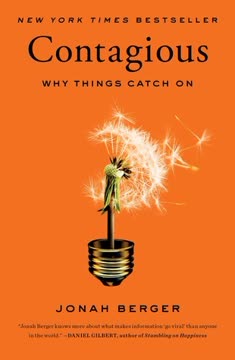
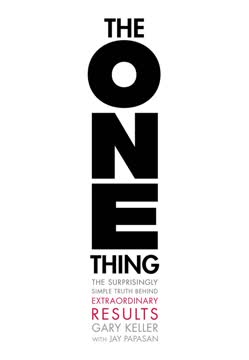


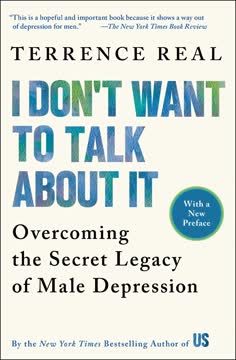
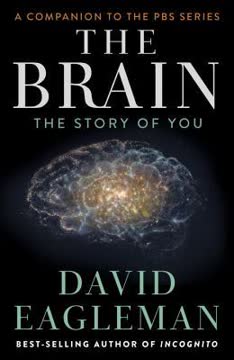

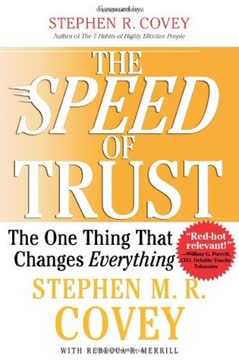

Download PDF
Download EPUB
.epub digital book format is ideal for reading ebooks on phones, tablets, and e-readers.













